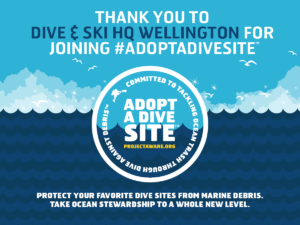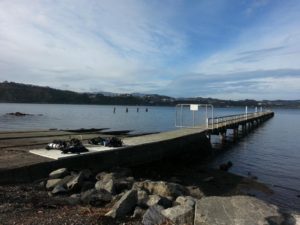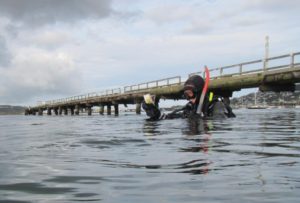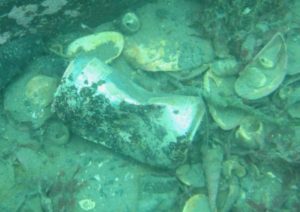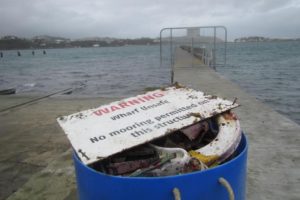Why adopt a dive site at all? This is Project AWARE’s latest campaign to tackle marine debris and track the amount of debris that enters a dive site over time. We have committed to dive at our adopted dive site every month for a year and submit data on the rubbish collected.
We have selected this historic site:
The Patent Slip (1873):
It took two years and diving bells to build the slipway which opened on the 2 May 1873. Ships of 2000 tons or more could be winched up along the rail track and during the Second World War it was used to build minesweepers. A smaller slip was built in 1967 and the old slipway was closed. The whole slip was finally closed in May 1985, after 112 years of operation.
The old site is commonly known as ‘Cog Park’ and has a great display of the site’s history along with an old cog. In the water you can see four piles from the original wharf along with the now closed wharf and the slipway itself.
The Dive:
It took 6 divers less than 40 minutes and a couple of return trips to collect over 200l or 60+kg of marine debris. There were a number of old glass bottles but most of the rubbish included food and drink containers, along with some sunglasses, fishing items, clothes, random plastic items, part of a high chair and unfortunately so much more.
Post Dive:
Once the debris was bought back to land we need to decritter it – remove any marine creatures that had attached to the debris itself. These species included chitons, crabs, small fish, octopus and sea stars. One tin can was returned as an octopus had laid her eggs inside. A couple of kids came down to see what we were up to and look at the fish we were returning to the sea – teaching future generations? I hope so.
Then the rubbish was sorted into different categories – glass, plastic, metal etc and counted. This is an important step as this is the information sent back to Project Aware and the data they will use to determine the amounts and types of marine debris in our oceans.
It was a great effort but unfortunately there is a lot more to do – even in this small area. Just as well we are heading back again soon.
